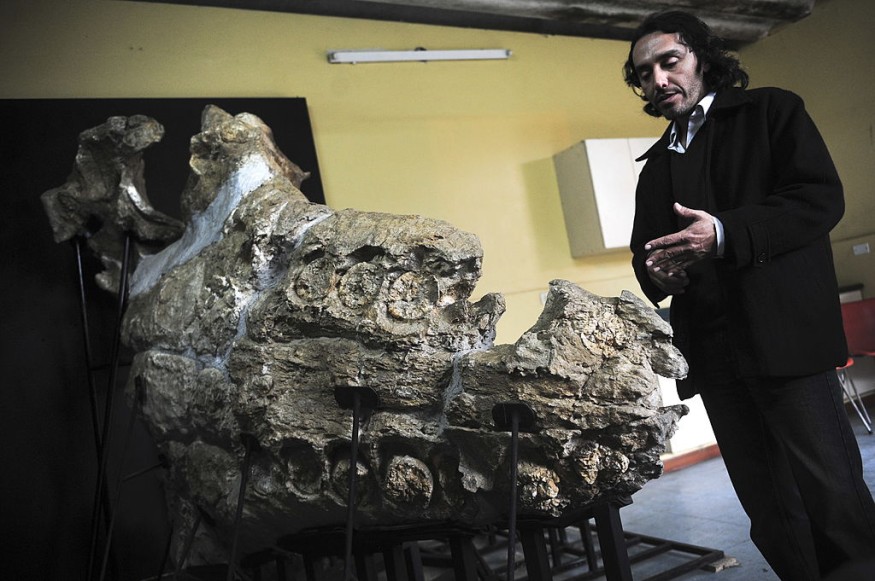
Modern-day whales are considered to be gentle giants. But an analysis of the well-preserved skull of an ancient whale showed that their ancestors who swam the Peruvian seas around 36 million years ago were anything but gentle, MailOnline reported.
Researchers from the National University of San Marcos in Peru refer to this terrifying animal as a "marine monster," having measured 55 feet (17 meters) long with razor-sharp teeth to feed on large animals, including sharks, tuna, and schools of sardines. Rodolfo Salas-Gismondi, one of the researchers, said that the whale was one of the largest predators of its time.
Rodolfo Salas, one of the scientists who discovered an ancient whale fossil, speaks next to the jaw of the fossil at the National History Museum in Lima on July 01, 2010.
Ocucaje Desert in Peru Home to Primitive Sea Creatures
According to IFL Science, the discovery of the basilosaurus skull in the Ocucaje Desert in Peru represents the region's history. It means that the shallow sea was once home to primitive sea mammals.
Scientists have considered the Ocucaje Desert as their playground after finding several fossils of ancient marine animals in the region. For paleontologists, it was like a lucky dip sandpit that reveals the evolutionary evidence of different creatures. Its hidden treasures date back 42 million years, including the Miocene era dolphins, sharks, and four-legged dwarf whales.
Salas-Gismondi told AFP that the Peruvian sea was most likely warm at the time. The fossils they found can help them reconstruct the history of the Peruvian sea.
Peru's Marine Monster Was Unlike the Gentle Whales Today
The 36-million-year-old skull was unearthed in 2021 from bone-dry rocks of the southern Ocucaje desert, Reuters reported. Salas-Gismondi said that the skull sports long, pointy teeth similar to a basilosaurus, which belongs to the aquatic cetacean family whose descendants include dolphins, whales, and porpoises.
Peru's 'marine monster': 55ft ancient whale was one of the largest predators 36 million years ago and had razor-sharp teeth to feast on tuna and sharks, skull analysis revealshttps://t.co/xe0hzgu7Iq pic.twitter.com/Mh4MI9Jks4
— STEFAN (@nevadaknight67) March 18, 2022
Despite being classified as a basilosaurus, experts said that the skull did not belong to a lizard but instead to a mammal. On the other hand, they believe that its long body might have moved like a giant snake that likely measured some 39 feet long (12 meters) or equivalent to a four-story building.
They call the Peruvian marine monster the Ocucaje predator, whose skull is now displayed at the university's museum. Salas-Gismondi noted that the ancient creature was unlike today's gentle giants and probably did huge damage when it was searching for food given its razor-sharp teeth.
Scientists believe that cetaceans likely evolved from mammals that existed over 55 million years ago or just 10 million years after dinosaurs were wiped out by the asteroid that hit the Yucatan peninsula in Mexico. He explained that the ancient skull likely sunk at the bottom of the seafloor, where it was quickly buried and preserved. Hence the well-preserved scientists unearthed last year.
RELATED ARTICLE : Dinosaurs With Long Neck and Tail Had Unique Gait; Sauropods Walked Like Hippopotamus, Study Says
Check out more news and information on Paleontology in Science Times.
© 2025 ScienceTimes.com All rights reserved. Do not reproduce without permission. The window to the world of Science Times.












